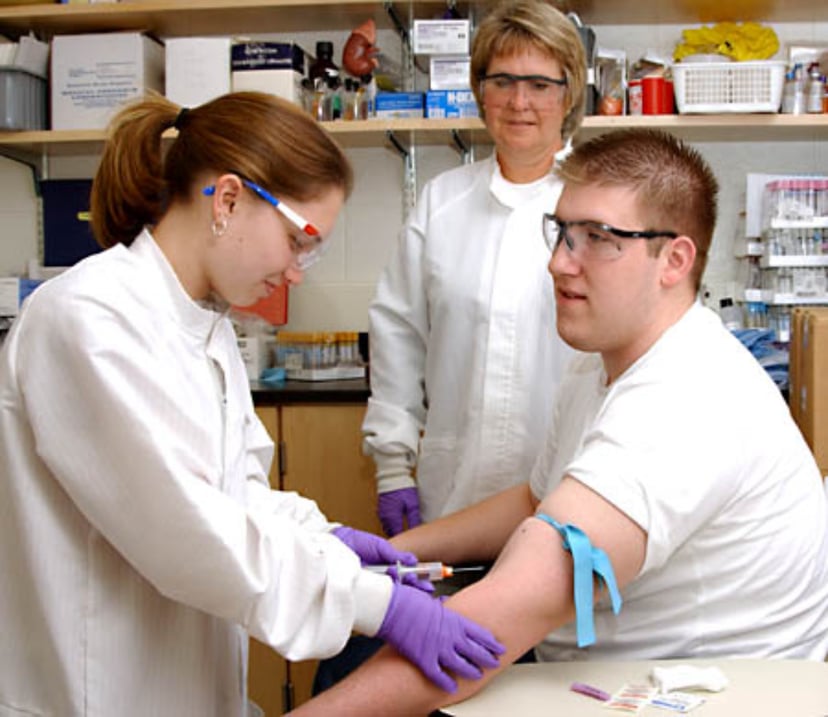Phlebotomy

Phlebotomy
Phlebotomy is the process of making a puncture in a vein with a needle, for the purpose of taking blood. The procedure itself is known as a venipuncture. A person who performs phlebotomy is called a "phlebotomist", although doctors, nurses, medical laboratory scientists and others do portions of phlebotomy procedures in many countries.[1] It is not to be confused with phlebectomy.
| Phlebotomy | |
|---|---|
| ICD-9-CM | 38.99[6] |
| MeSH | |
Phlebotomists
Phlebotomists are people trained to draw blood from a patient (mostly from veins) for clinical or medical testing, transfusions, donations, or research.
Phlebotomists collect blood primarily by performing venipunctures (or, for collection of minute quantities of blood, finger sticks).[2] Blood may be collected from infants by means of a heel stick. The duties of a phlebotomist may include properly identifying the patient, interpreting the tests requested on the requisition, drawing blood into the correct tubes with the proper additives, accurately explaining the procedure to the patients, preparing patients accordingly, practising the required forms of asepsis, practising standard and universal precautions, performing the skin/vein puncture, withdrawing blood into containers or tubes, restoring hemostasis of the puncture site, instructing patients on post-puncture care, ordering tests per the doctor's requisition, affixing tubes with electronically printed labels, and delivering specimens to a laboratory.
Some countries, states, or districts require that phlebotomy personnel be licensed or registered.
Australia
In Australia, there are a number of courses in phlebotomy offered by educational institutions, but training is typically provided on the job. The minimum primary qualification for phlebotomists in Australia is a Certificate III in Pathology Collection (HLT37215) from an approved educational institution.[3]
United Kingdom
In the UK there is no requirement for holding a formal qualification or certification prior to becoming a phlebotomist as training is usually provided on the job. The NHS offers training with formal certification upon completion.[4]
United States
Special state certification in the United States is required only in four states: California, Washington, Nevada, and Louisiana. A phlebotomist can become nationally certified through many different organizations. However, California currently only accepts national certificates from six agencies. These include: American Certification Agency (ACA), American Medical Technologists (AMT), American Society for Clinical Pathology (ASCP), National Center for Competency Testing/Multi-skilled Medical Certification Institute (NCCT/MMCI), National Credentialing Agency (NCA), National Healthcareer Association (NHA), National Phlebotomy Certification Examination (NPCE).[5] These and other agencies also certify phlebotomists outside the state of California. To qualify to sit for an examination, candidates must complete a full phlebotomy course and provide documentation of clinical or laboratory experience.
History
Early "phlebotomists" used techniques such as leeches and incision to extract blood from the body. Bloodletting was used as a therapeutic as well as a prophylactic process, thought to remove toxins from the body and to balance the humours. While physicians did perform bloodletting, it was a specialty of barber surgeons, the primary provider of health care to most people in the medieval and early modern eras.
See also
Cytotechnologist
Injection (medicine)
Medical technologist
Venipuncture
List of surgeries by type